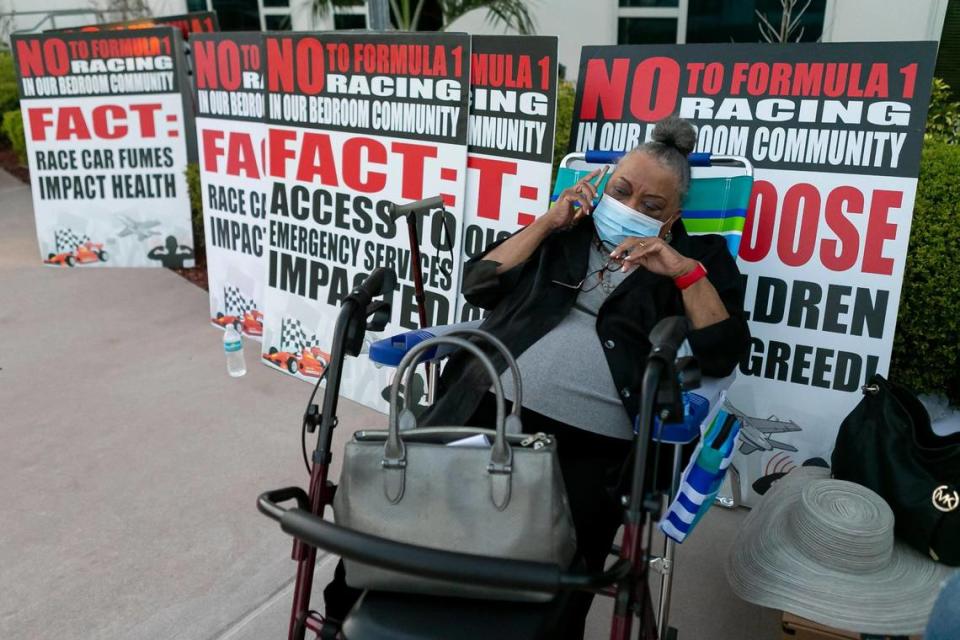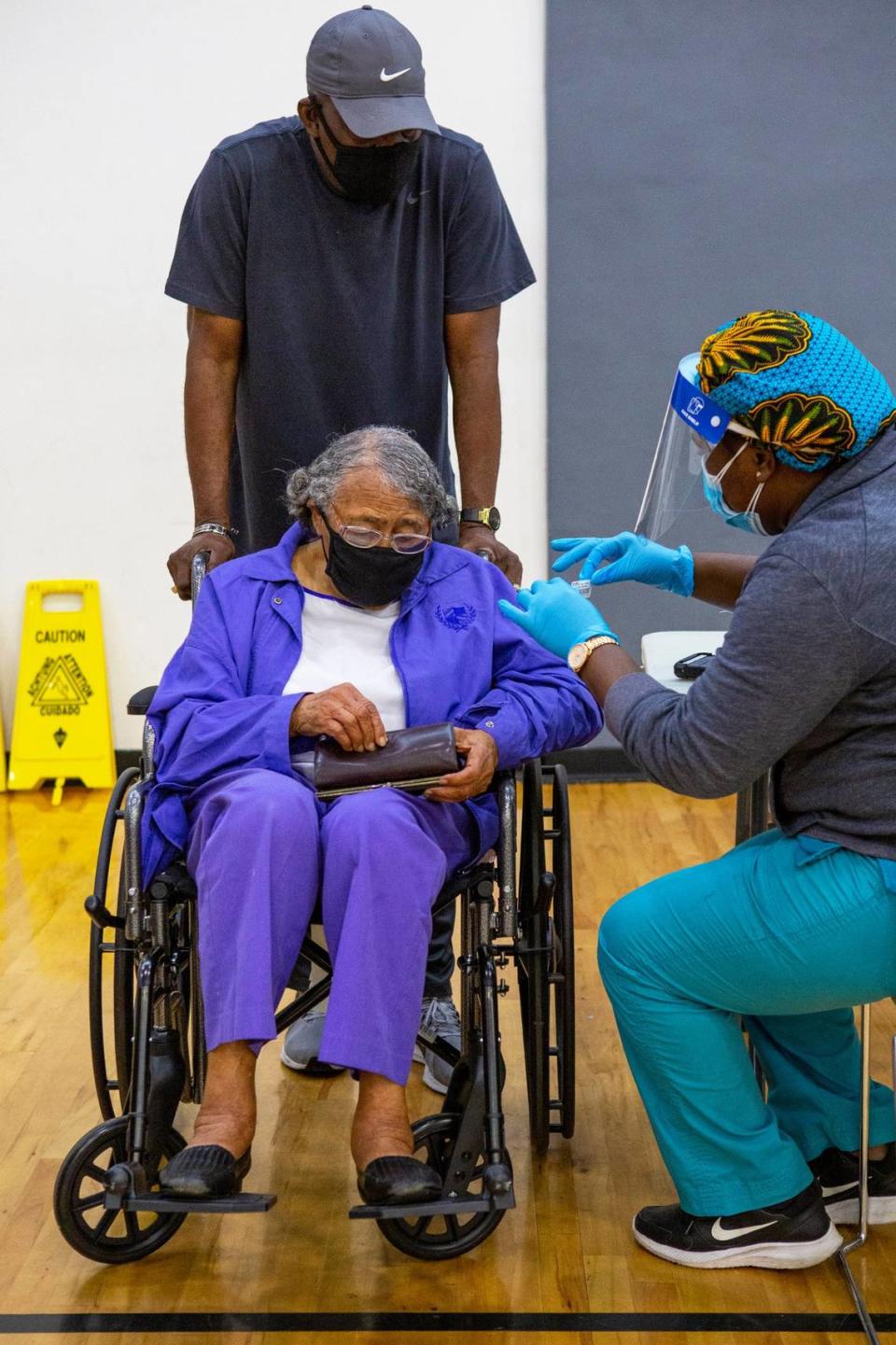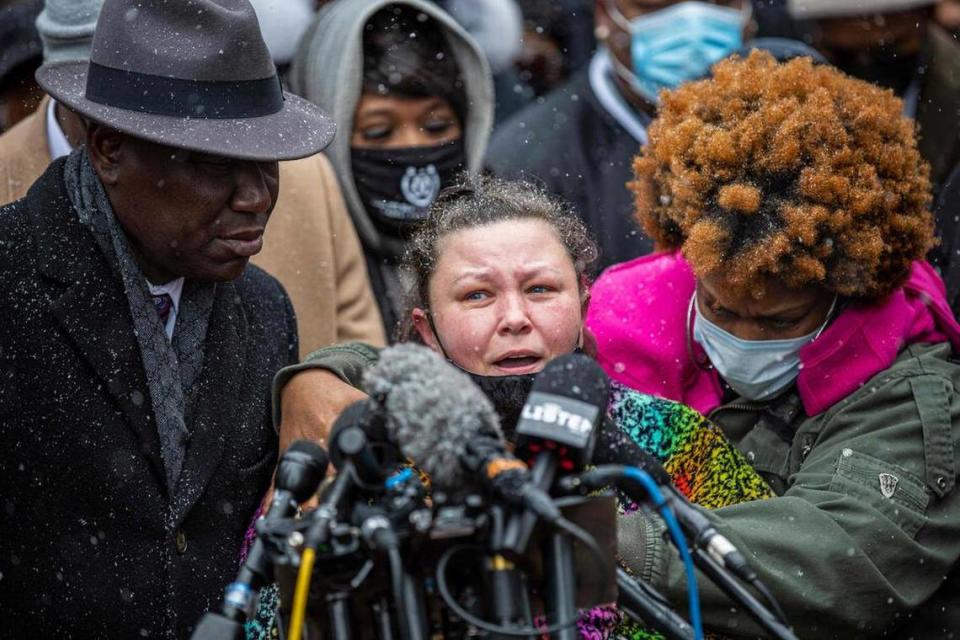The 44 Percent: Miami Gardens’ F1 resolution, Daunte Wright and Fire in Little Africa
Excuse the abbreviated intro but your boy is tired. Tired of police murdering Black men and women. Tired of the weak excuses. Tired of the little-to-no change. It’s times like these that the American Dream is attainable for everyone except those that look like me.
And let me be clear: I am by no means convicting Kimberly Potter, the 26-year veteran ex-officer who shot and killed 20-year-old Daunte Wright in Brooklyn Center, Minn. But the very incident of Black death at the hands of police is a form of trauma that wears on Black and brown individuals. Like can’t we get a break? Not even in a pandemic? Not even as the trial of Derek Chauvin, another former officer accused of murdering a Black by the name of George Floyd, proceeds about 10 miles away?
So as you balance tuning into Chauvin’s trial with the latest news about Wright’s killing, let me offer you a healthy reminder: please, for the sake of you, your family and everyone else you care about, take a break. Your mental health will thank you later.
Now, let’s start the show:

INSIDE THE 305
Miami Gardens mayor proposes resolution centered around Formula One race:
Miami Gardens Mayor Rodney Harris proposed a resolution Wednesday that many residents believes essentially paves the way for the Formula One race to occur at Hard Rock Stadium. News of the resolution broke last week, causing locals to flock to the meeting in droves. A few names might be recognizable: former County Commissioner Barbara Jordan, former County Commissioner Betty Ferguson and Miami-Dade NAACP chapter president Daniella Pierre.
“It’s a game to them,” Ferguson told the Herald ahead of the meeting. “It’s an insult to us.”

Harris’ proposal, which included financial incentives, noise barriers and other ideas meant to appease the concerns of locals, passed on a vote of 5-2. The resolution comes about six months after residents accused Miami-Dade County and the Miami Dolphins of racism by conspiring to move the race to Miami Gardens against residents’ wishes in a federal civil rights lawsuit.
Related Coverage:
Latest proposal could end impasse and bring Formula One Racing to Miami Gardens
Miami Gardens residents sue Gimenez, Dolphins and Formula 1 over Hard Rock race

Florida’s FEMA vaccination sites failed most Black communities:
An investigation found that FEMA-supported sites in Black communities vaccinated a disproportionate number of Black people compared to the demographics of the area. Many local officials linked this disparity to Gov. Ron DeSantis’ strict conditions on who could receive the vaccine as well as the state’s failure to collaborate with local cities on outreach efforts.
“There is no question we were in the dark,” Orange County Mayor Jerry Demings told the Herald. “We could have fashioned a rollout that would have been much more effective than what we ultimately ended up with. We’ve been playing catch-up.”
Black people accounted for 47% of vaccinations at a site in Central Florida’s Haines City — the highest rate in the state. The key? Extensive neighborhood outreach outside of churches and social media.
“This was a life-and-death situation,” Regina Hill, an Orlando commissioner, told the Herald. “I had people crying to me trying to figure out how to bury their loved ones. My brother died. People were getting sick left and right. They were petrified. I knew I couldn’t wait on the cavalry.”
OUTSIDE THE 305
Fatal shooting of Daunte Wright and the case of mistaking a gun for a taser:
Hours after news of Wright’s killing became public, the since-resigned Brooklyn Center police chief said that Potter, the ex-officer behind the fatal shooting, had mistaken her gun for a taser. That error was the topic of a recent New York Times article entitled “How could an officer mistake a gun for a taser?” in which retired Los Angeles Police officer Scott A. DeFoe had this to say:
“If you train enough, you should be able to tell,” DeFoe told the NYT.

That’s not to say training is the end-all-to-be-all. A recent CNN opinion piece by Cedric L. Alexander details how Chauvin’s trial has exposed how police receive insufficient training.
One of the eeriest aspects of Wright’s killing is how closely it resembles that of Oscar Grant, a 22-year-old whom police killed in Oakland, Calif. in 2009. In that instance, the officer, who was later found not guilty, claimed to have been reaching for his taser when he fatally shot Grant. Potter, who also recently resigned, has since been charged with second-degree manslaughter.
A Heroin-using Ivy League Professor wants to change perception of drugs:
In an attempt to end on a more lighthearted note, meet Carl L. Hart, a neuroscientist at Columbia University. Hart, who recently penned a book entitled “Drug Use for Grown-Ups: Chasing Liberty in the Land of Fear.” In it, he reveals he has regularly used heroin for the past four years and contends that most of the information disseminated about drugs is incorrect.
“We in the field are overstating the harmful effects of drugs,” Hart, a Carol City native, told The New York Times. “We have mis-educated the public, and that is wholly un-American and wrong.”
Although Hart has many critics, his experiments push back on the idea that most addicts are “essentially a slave to the drug,” instead finding people who “are actually happy” and “responsible.” He believes that the focus should ultimately be on what leads people to have negative experiences with drugs.
“If people have a co-occurring psychiatric illness, then that’s where the focus should be,” he said. “Not on the drug the person is taking. Or if this person now doesn’t have a sense of worth because they lost a job that was placing that person’s family in the middle class. If the treatment doesn’t focus on making sure that is replaced, then the treatment is a waste of time.”
HIGH CULTURE
In death, DMX still looms large:
I’ve learned more about DMX in the past six days than in my first 24 years of life. Between the obits and the dedications, the wealth of content that has come in the wake of X’s passing has been illuminating for young hip-hop fans like myself. I found myself in tears reading a few pieces that really humanized a man that had dealt with more than anyone ever should.

In X’s honor, I wanted to share a few pieces that particularly stood out to me: The Undefeated’s Justin Tinsley breaking down why X’s death struck a chord with so many, Vulture’s Craig Jenkins on what we can learn from X’s death and Refinery29’s Sharine Taylor on how X’s death could be catalyst for changing the way we talk about addiction.
Upcoming album to commemorate 100-year anniversary of Tulsa Race Massacre:
“I’m a product of desecration, total annihilation/ from under the fire blazing and the shell casings.”
This bar comes courtesy of “Fire in Little Africa,” an album created by a collective of Oklahoma-based rappers that’s set to release May 28 to commemorate the 100th anniversary of the Tulsa Race Massacre. For those in need of a history lesson, the massacre was one of the most horrific episodes of racial violence in American history. Between May 31 and June 1, 1921, a white mob burned Greenwood, a thriving neighborhood also known as Black Wall Street, to the ground, killing hundreds and leaving thousands homeless in the process.

In a true act of reclaiming history, the 21-track album was recorded across various locations in Greenwood, including the former home of Tate Brady, a Klu Klux Klan member and leader in the Tulsa Race Massacre.
Personally, I can’t name one rapper from Oklahoma so I’m excited to see what the state has to offer.
Where does the name “The 44 Percent” come from? Click here to find out how Miami history influenced the newsletter’s title.

